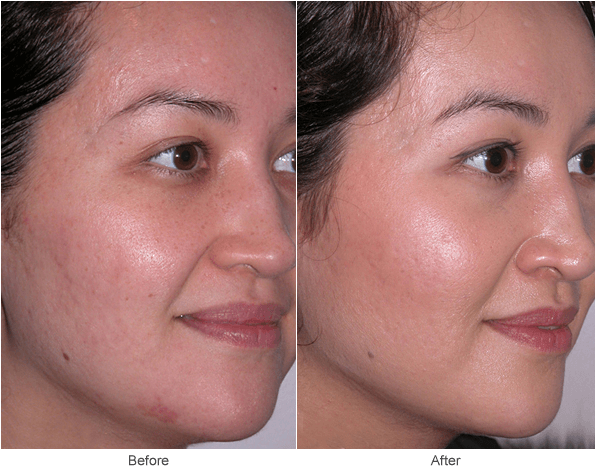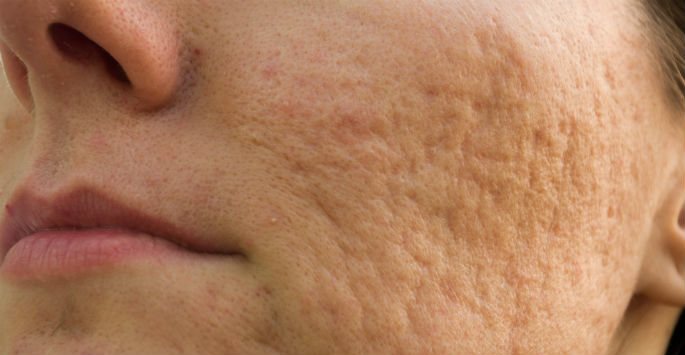Discovering Skin Problems: Recognizing and Dealing With Acne Scars for Healthier Skin
Acne scars stand for a significant worry for individuals seeking to keep healthy skin, as they can influence both appearance and self-confidence. Understanding the numerous types of marks, from atrophic to hypertrophic, is important for establishing suitable therapy alternatives.
Understanding Acne Marks
Recognizing acne scars is vital for anyone who has actually experienced extreme acne, as these marks can have a long lasting effect on both physical look and psychological wellness. Acne marks create when the skin undergoes inflammatory actions during energetic acne sores. The severity of scarring is typically affected by aspects such as the kind of acne, its period, and individual skin qualities.
The body's natural healing process can lead to either atrophic marks, which look like clinical depressions in the skin, or hypertrophic marks, which are raised and result from overproduction of collagen. Additionally, the mental toll of acne scars must not be taken too lightly; several people report sensations of shame, anxiety, and lowered self-esteem. This psychological burden can affect social interactions and overall lifestyle.
Addressing acne marks calls for a thorough understanding of their development and effect. Recognition of the potential for long-term effects related to unattended marks can inspire individuals to seek appropriate therapies. Early treatment and efficient administration techniques can considerably improve skin look and boost mental resilience, emphasizing the relevance of comprehending the complexities surrounding acne marks.
Kinds Of Acne Scars
Acne marks can be categorized into distinctive kinds, each displaying distinct characteristics and calling for certain treatment strategies. The main types of acne marks include atrophic, hypertrophic, and keloid scars.

Hypertrophic scars, on the other hand, are increased over the skin level and are the outcome of excessive collagen production throughout the recovery procedure. They generally stay within the borders of the initial acne lesion. Keloid scars are comparable yet expand past the original injury site, forming larger, increased locations that can be scratchy or painful.
Comprehending these kinds of marks is essential for selecting suitable treatment choices. Different scars may respond better to specific therapies, such as laser treatments, fillers, or surgical treatments, stressing the relevance of a customized strategy to acne mark monitoring.
Recognizing Your Marks
When examining the look of your skin, it is important to precisely determine the sort of scars existing, as this will certainly notify the most effective treatment approach. Acne marks typically fall under two categories: atrophic and hypertrophic marks. Atrophic marks, which are the most common, show up as clinical depressions or imprints on the skin. These can even more be classified right Source into ice-pick marks, boxcar scars, and rolling marks, each showing unique qualities and requiring various techniques for evaluation.
Hypertrophic marks, on the other hand, are elevated and occur as a result of extreme collagen manufacturing during the recovery process. Acknowledging the certain attributes of useful link your marks-- such as texture, width, and deepness-- is vital for proper identification. In addition, consider the circulation of marks across your skin, as this can suggest the severity and duration of the acne problem.
Involving with a skin specialist can give valuable insights right into the nature of your marks, aiding in the distinction in between various types. A detailed understanding of your scars will ultimately cause an extra customized and effective treatment strategy, making certain a more clear and healthier complexion.
Treatment Choices Readily Available
Recognizing the specific kind of acne scars existing on your skin lays the foundation for checking out reliable therapy alternatives. Common sorts of acne scars include atrophic (depressed), hypertrophic (increased), and post-inflammatory erythema.
For atrophic marks, alternatives such as chemical peels, microneedling, and laser resurfacing are extensively made use of. Chemical peels off utilize acids to remove the outer layer of skin, promoting new cell growth. Microneedling involves tiny needles that create micro-injuries, stimulating collagen production. Laser resurfacing targets damaged skin cells, boosting texture and tone.
Hypertrophic scars can be treated with corticosteroid injections to squash the mark or laser treatment to minimize inflammation and improve appearance. acne scars. Silicone gel sheets and pressure dressings might also aid in taking care of elevated scars
Additionally, dermal fillers can temporarily fill out anxieties from atrophic marks, while surgical excision may be suitable for severe instances. Each therapy our website choice has its considerations and benefits, making it vital to talk to a skin doctor. They can provide individualized referrals based upon the type and severity of your scars, in addition to your skin kind and total health.
Tips for Prevention
Reliable prevention strategies can dramatically minimize the likelihood of creating acne scars. The very first step is to keep a constant skin care routine that consists of gentle cleaning, exfoliation, and hydrating. Using non-comedogenic items helps protect against blocked pores, which can aggravate acne. Furthermore, including topical treatments having salicylic acid or benzoyl peroxide can efficiently handle outbreaks and reduce swelling.
Avoiding need to select or pop acne sores is essential, as this can cause much deeper skin damage and enhance the threat of scarring. Rather, consider utilizing a chilly compress or non-prescription treatments to decrease swelling and inflammation.
Sunlight defense is another important element of prevention; ultraviolet (UV) rays can dim marks and hinder the healing process. Applying a broad-spectrum sunscreen with a minimum of SPF 30 daily can secure the skin and advertise also healing.
Lastly, maintaining a well balanced diet regimen rich in vitamins, antioxidants, and minerals supports skin wellness and healing. Remaining moisturized and handling stress and anxiety levels can likewise play a significant function in lowering acne flare-ups. By executing these approaches, individuals can substantially decrease their chances of establishing acne marks.

Verdict
In conclusion, understanding and identifying acne marks is essential for effective treatment and attaining much healthier skin. Numerous types of acne scars, including atrophic and hypertrophic marks, demand certain treatments tailored to private needs.
The body's all-natural recovery procedure can result in either atrophic scars, which appear as depressions in the skin, or hypertrophic marks, which are increased and result from overproduction of collagen. They are further divided right into three subtypes: ice pick scars, boxcar scars, and rolling scars. Acne marks normally fall into two groups: atrophic and hypertrophic scars. These can additionally be identified into ice-pick scars, boxcar scars, and rolling scars, each exhibiting distinctive characteristics and calling for different techniques for assessment.
Numerous types of acne marks, including hypertrophic and atrophic scars, require specific interventions customized to individual demands.